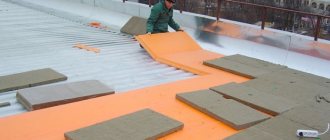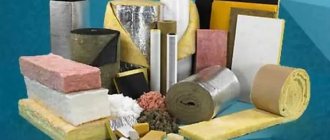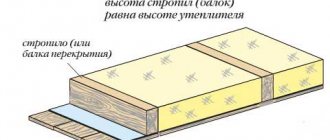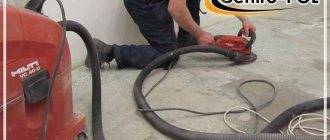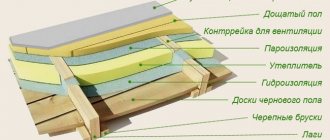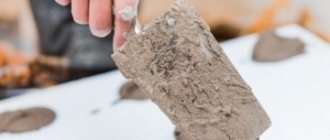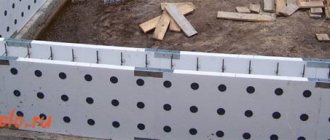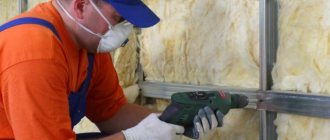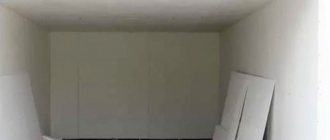During the period when the thermometer drops to minus levels, the problem of heat preservation in residential premises invariably gains relevance. The latest technologies in construction, helping to solve the problem of strengthening low-rise buildings in terms of thermal insulation, have several different directions. It is this circumstance that makes many developers think about how to insulate the roof of a house from the inside with their own hands, in order to take into account all the positive aspects of this event.
Modification of the building will be especially valuable for those objects that, during the construction of low-rise buildings, intended to use this type of space in the future for arranging premises suitable for habitation. If at the very beginning of construction it was supposedly planned to insulate the roof from the inside with mineral wool or other material in order to protect the building from loss of energy resources and arrange free space for housing, then all work in terms of improvement should be taken into account when installing the roof.
Roof insulation system from the inside
The well-known expression: “Close the doors, don’t let the heat out” does not entirely correspond to the truth. Heat leaves the room not only through window and door openings, although these elements of the building are an important factor when taking into account the conservation and conservation of energy resources. A properly designed and insulated roof from the inside can retain from 18 to 29% of the total heat in the house. Here it is important to know the laws of physics: when heated, the air rises, where it enters the atmosphere in all possible ways, but if the building is properly insulated, the air circulates inside it, which means the resources spent on heating the building are saved significantly.
Thanks to a unique system that resembles the presence of a pie layer, a quality of sealing from the inside of the roof is achieved that can protect the building not only from moisture and cold currents entering the interior, but also from heat loss from the inside. The insulation system consists of three main elements:
- Vapor barrier . An element whose task is to retain the accumulation of warm air in the upper part of the room and prevent condensation that forms as a result of cooling of the air in the attic.
- Insulation . The purpose of the element is clear based on its name. As insulation, which is used for these purposes, several materials that are completely different in their technical characteristics can be used simultaneously.
- Waterproofing . With the help of this element, reliable protection of the building is ensured from the ingress of precipitation in the form of rain and snow. This layer is laid almost immediately under the roof, which enhances the protective function of the element.
The basis of the entire system is the rafter structure, thanks to which all other elements are installed. Before you begin insulation, you need to familiarize yourself in detail with the available options, the technology used for installation and, based on this information, choose the most appropriate option.
Some tips from the professionals
It is possible to do roof insulation with your own hands, but it requires skills in working with tools and building materials.
If the goal of independent work is to save money on the services of hired workers, then this approach is unlikely to help achieve the desired result. Boots should be made by a shoemaker, and construction work should be done by builders.
Professionals recommend several “don’ts”:
- do not try to mask detected defects in the roof structure with insulation (foam plastic, mineral wool, ecowool, polyurethane foam);
- spare no time and money on treating surfaces with primers and antiseptics;
- do not save money by using ordinary polyethylene instead of “breathable” vapor barrier and waterproofing membranes;
- Do not work alone - this is a safety rule;
- do not use ordinary polystyrene foam as insulation, but only extruded polystyrene foam.
The main goal of the work is to prevent heat loss from the house structure.
Thermal insulation: selection of material according to characteristics
Not all developers know how to properly insulate the roof of a house from the inside due to the lack of necessary information about the material that can be used for these purposes. Any construction insulation has its own technical characteristics, which have both positive aspects and disadvantages. Manufacturers pay the greatest attention to the following main points, which affect both the operational period and its suitability when used for thermal insulation.
- Moisture absorption. The less the insulation absorbs moisture during operation, the longer and better it does its job.
- Thermal conductivity. The lower the heat conductivity, the better; this circumstance depends on factors that are taken into account during manufacture, namely porosity and density.
- Density. Insulation with low density is considered the best in terms of technical characteristics.
When choosing the right material, important factors in production and operation are environmental friendliness, its resistance to fire, frost resistance, strength and durability under the influence of an aggressive environment. In addition, you should also take into account the type and configuration of the roof, the price and features of the installation work.
Methods for installing thermal insulation materials
Roof insulation materials can be laid in a variety of different ways, which depend on many parameters.
Direct installation of insulation is carried out in the following ways:
- Rolled. In this case, a roll of material is laid with a protruding backing along the edges. Most often, polymer insulation coated with foil is used for this method.
- Printed. To implement this method, a metal mesh with cells measuring 15x15 mm is pre-tensioned. The mesh is fixed with pins and then covered with insulation.
- Backfill. This method is usually used if the distance between different rafters changes. The thermal insulation material in this case is vermiculite, foam glass or perlite sand. It is advisable to use the backfill method on roofs of non-standard configuration, but only if they are not ventilated - the insulation can simply blow out due to the wind.
- Sheet. As the name of the method suggests, the insulating material in this case is products in the form of sheets or slabs. Thermal insulation is laid directly into the rafter frame. Working with sheet materials is much easier due to their shape and low weight.
- Blown. To make blown-in insulation, you will need fibrous polymers and flexible piping that can provide the required pressure. This method is not relevant in case of insulation of roofs of complex configuration.
- Sprayable. To implement this method of insulation, a polyurethane foam composition is used. It is applied to any internal area of the roof, completely filling all free space. The material does not require fastening due to the absence of seams, is very durable and well protected from biological damage.
Features of insulation of pitched roofs
It is easier to carry out work on insulating a pitched roof from the inside with a material that does not have a high density. Insulation of a pitched roof is carried out directly on the sheathing of the rafter system. In order for the insulation of a pitched roof to be carried out in accordance with technological rules, it is necessary to protect the insulation, which will be used as thermal insulation, on both sides with special layers: waterproofing on top, vapor-permeable on the bottom. It is important that there is a gap between the thermal insulation and the roof, the so-called ventilation duct, which will provide the buffer zone necessary during operation.
Insulating a roof from the inside with your own hands on a pitched roof is not as simple a task as it initially seems: young specialists often make annoying mistakes and mistakes, which later affect the operation. Let's list the main ones:
- The option used must exactly match the dimensions; any lack of insulation at the joints is considered a defect in the work, which will later be reflected in the operation of the building as heat loss.
- The use of insulation with a high percentage of moisture absorption. This feature may have little effect on the material itself, but the roof, especially if a metal profile is used, may suffer from corrosion ahead of time. Rafters and sheathing may also suffer (rot), since these elements are made of wood.
- Failure to use all elements during installation. There are a number of experts who believe that the presence of a vapor barrier or waterproofing is not always required; this is one of the common and serious mistakes that will affect the operation of the building.
When choosing vapor barrier and waterproofing, several modifications are used, specially created for these purposes. It may differ in its technical characteristics, so you need to pay attention to this factor.
A very similar technique is used when it is necessary to insulate a pitched roof. Moreover, the choice of insulation option and the installation itself are not much different.
Features of attic arrangement
Carrying out work on insulating the roof from the inside yourself is a doubly responsible task if in the future you plan to use the attic space as an additional living area. Here, too, the main task before starting work is the choice of material, and experts advise paying attention to the most popular technologies:
- Mineral wool.
- Polyurethane.
- Expanded polystyrene.
Each of the listed materials is good in its own way, but there are also nuances both during installation work and during operation.
Insulating an attic roof from the inside with your own hands using mineral wool is good because it is soft in structure, and making it in the form of mats makes it possible to tightly fit the joints. When arranging an attic roof from the inside with your own hands, it is important to take into account that during operation the insulation does not rot, is environmentally friendly and has all the necessary thermal insulation properties. Insulating the roof from the inside with mineral wool meets all the technical characteristics listed above; the only thing that needs to be taken into account is the type of base from which it is made and the density. It is easier to insulate a roof from the inside with mineral wool from a material that is made from stone or basalt rocks, although fiberglass has better technical characteristics in terms of thermal insulation.
Polyurethane and expanded polystyrene are considered more modern materials intended for use in landscaping for the purpose of thermal insulation. Another option is to use polystyrene foam. It has excellent thermal insulation properties. Insulating a roof with foam plastic from the inside is very beneficial for several reasons, the main ones being the high level of protection of the room from heat loss and excellent performance data: it does not rot, and is not susceptible to moisture destruction. Its main disadvantage is considered to be increased flammability, so experts do not recommend insulating the roof of a wooden house from the inside for reasons of safe operation of the building.
Types and characteristics of materials for do-it-yourself insulation
Before insulating a finished roof, you should decide on the material for interior work.
The choice should be made taking into account the following characteristics:
- Density. This indicator directly affects the quality of heat transfer of the material. The lower the density, the higher the porosity. As porosity increases, the thermal conductivity of the material decreases, which means its thermal insulation properties increase.
- Heat transfer. This indicator affects not only the degree of porosity, but also the temperature and humidity level of the material. As these indicators increase, heat transfer also increases.
- Ability to absorb moisture. To prevent the insulation from absorbing and retaining moisture between the fibers, it is treated with special hydrophobic substances. In particular, the presence of such treatment should be clarified when purchasing mineral and glass wool.
- Flammability.
- Ability to withstand low temperatures.
- Chemical resistance.
- Environmentally friendly.
Based on the indicated characteristics, the optimal materials for insulating a metal roof from the inside are the following varieties:
- Mineral and glass wool . You can purchase such materials both in the form of individual slabs and in rolls. In terms of fire resistance, mineral wool is slightly superior to glass wool.
- Polystyrene foam or polystyrene foam . Available in slabs or extruded products. This material is quite flammable and releases toxic substances when burned. Therefore, it requires additional fire protection.
- Polyurethane foam . This material can be presented in the form of panels or liquid compositions. The latter are applied to the roof surface using special equipment, so specialized teams of builders are engaged in such work.
